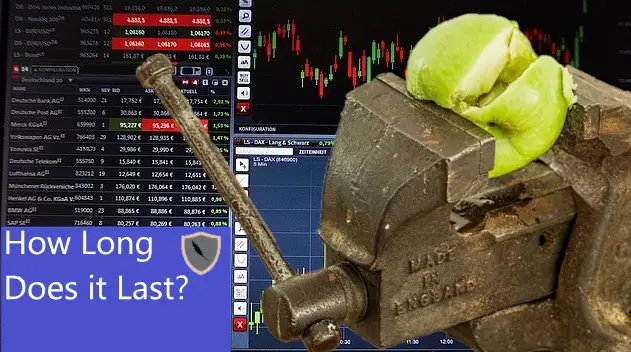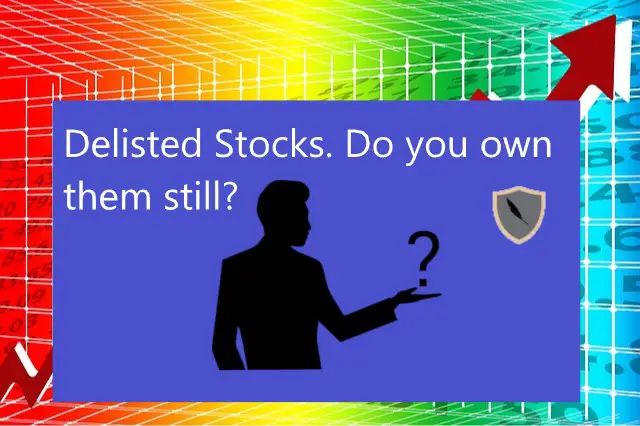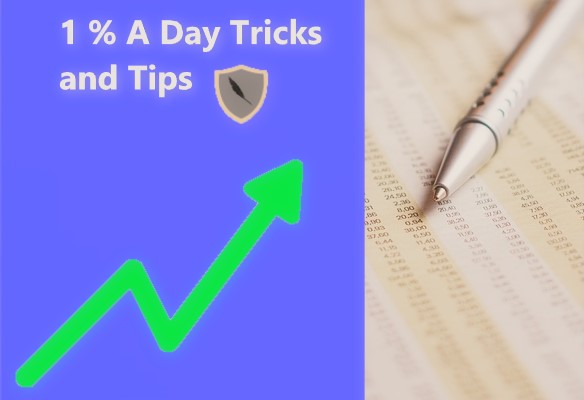All over the internet you will see ‘professional’ investors/traders who promote their lifestyle of fast cars, beautiful scenery, and the allure of working on your own time.
The real lifestyle of a professional investor couldn’t be more different. Professional investors wake up between 5:00-6:30 AM during trading days, get to reading professional reports, and even after market hours monitor their investments constantly.
Generally there are no fancy cars or beautiful scenery. As a professional investor you will spend a majority of your day reading reports and attending meetings. This could be done either in an office or remote, but will demand 100% of your attention. As such there won’t be much time for enjoying stuff during working days.
Now becoming a professional investor does not mean you won’t be able to get all of the nice things. Most professional investors return around 23% per year in the market once they understand what they are doing. This will take some time but like anything you get out what you put into it.
Let’s jump right into what a normal day in the life of a professional investor/analyst is like.
Wake up: 6:00-7:30 am
Most professional investors are fueled by market reports and the ability to learn more about a company.
As a result the professional investor will often wake up at or around 6:00 am during days the market is open. This is because they can get ahead on their research for the day.
My favorite thing to do around 6:15 am is to get a large black coffee. I will often print out reports and sit on my back porch and go through what has happened the night before.
Trust me, this is anything but glamorous. I am not in a fancy jacket or in a penthouse apartment. I’m in my pajamas, on my back porch, half awake, and holding in one had a hot cup of coffee and in the other about 3 or 4 financial reports.
If you saw me chances are you would think I was homeless and squatting on someone’s back porch.
A good professional investor will have a bunch of reports they need to go through every morning. Typically this is just to make sure that your investments will continue to make you money. Normally you won’t be making investment decisions on a daily basis, just playing mechanic and maintaining your ongoing investments.
As I read through my reports and sip my coffee I will begin writing down trends that are evolving in a sector. Depending on what has happened over the night I might add or subtract from one of my positions. Most of the time however I don’t need to adjust anything unless there is a major change in the sector my investment is in.
By 7:30 I am fueled on coffee and have a game plan for the morning. It’s time to meet with the other investors/analysts.
Time to start work: 7:30-8:00 am
Around 7:30 I am dressed and ready to meet with the analysts. Each analyst is positioned to research a different company/sector and stay on top of what’s developing.
Further analysts are expected to recommend investments to portfolio managers if they find an opportunity. It’s weird the entry level position at most funds, the junior analyst, oftentimes has the most sway in portfolio decisions.
For several funds I am an independent contractor/PM. I sign NDA and DNC agreements and help generate alpha within their clients portfolios. In essence it’s my job to help professional investors make the right decisions in the market.
Back to the analysts, these guys are amazing. Most of the time they’re fresh out of college with great ideas on how to shape their investments and sectors. Around 7:50 the first round of meetings between the lead analysts and junior analysts is complete.
Much like me the daily ‘stand-up’ meetings are just to make sure the clients’ investments have not exploded overnight. Now the lead analysts and I meet with the portfolio managers.
Meeting between LAs and PMs: 8:00-9:00 am
From 8:00 am-8:30 am you can expect to meet with about one or two teams of lead analysts and portfolio managers. The goal here is to have the analysts distill the proper info and pass it along to the portfolio managers.
Each PM handles a portfolio that is built around either an investment methodology or client’s wishes. For example, you can have a PM that handles just going long on Viagra medicine for example. That PM will know everything there is to know about Viagra and how to invest off it to make sure net profits rise.
I am here to help the PM’s properly allocate their portfolio to generate the most alpha for the client. As a professional investor I will be tasked with finding and presenting opportunities that use unique investment methodologies. I occasionally upload interesting ones here to ChronoHistoria (the ones I am allowed to).
These meetings are normally short unless something crazy has happened over the night. Once 8:30 rolls around we adjourn and go our separate ways.
Second Coffee and Team Meetings: 9:00-9:30 am
Since I am a contractor I don’t have a team. If you were to become a professional investor/analyst for a firm you would.
My day therefore between 9:00-9:30 am is spent grabbing my second coffee and prepping my risk models. A risk model is designed to show me a ‘worse case scenario’ for either mine or a client’s investment.
Risk model creation and evaluation will separate an amateur investor from a professional one fast. I will never enter into an investment without having a proper model created and a hedge in place.
The models I create will automatically update a stock’s price, bid/ask, delta, volume, and forecast. From 9:00 – 9:30 am EST I will update and tinker with the model to make sure it’s as accurate as possible. This takes me about 15-20 minutes to update certain parameters of the model.
From 9:15-9:30 I will typically take a break and get ready for the day. This is my second coffee time. By now I have already put in about 3 hours of work. It’s time for a little 15 minute break to gather my thoughts and mentally prepare myself to deal with whatever the trading day is going to throw my way.
Let’s set the record straight. Nobody can predict the market. I can tell you with 100% certainty what is going to happen at 9:30 am EST when the bell rings. I have seen the SPY drop 5 % within a day even though only positive news came out.
To be a professional you need to be willing to live and work on the edge. Today you might make 4% for your client, tomorrow you might lose 3%.
Now it’s time for the market to open…
Market Open and Sector Reports: 9:30 – 11:59 am
Ding…
It’s 9:30 am EST and now the market has opened. Hopefully if you did your research properly you are not seeing too much red in your portfolio.
For the first half hour of the market open you will just play mechanic and make sure to put out any fires that pop up in your portfolio. Sometimes one asset has way too much volume and as such the IV swings further then expected. Time to play mechanic and fix the issue.
Sometimes, rarely, your portfolio will work perfectly. These days are a blessing. If it happens to you then you can relax for about an hour. This is because at 10:30 am EST sector reports start showing up.
You need to read sector reports. When they start getting published you should be subscribed to receive them. An industry website that gathers and sells these sector reports is MarketResearch.com.
Now there are also independent reports that will come across your desk. Sometimes your brokerage/s will put out sector reports. These are ok, and give you a general idea on a sector’s progress. If you can’t find a proper report you need to do the work yourself. One of the best ways to do this is either academic journals or regulated Exchanges.
One of my favorite academic journals is the Oxford Quarterly Journal of Economics. OJE has an amazing selection of reports that are cost effective. I have made some amazing investment decisions based around academic work.
If however you can’t find the right journal report then you should check out your country’s exchange. For the U.S it is the SEC. Just by performing a simple search you can figure out some amazing details about a potential investment and their competitors.
This process of sector research should take you a couple hours to perform. I am typically done around noon. Assuming that your investments have not gone haywire during the trading day you have deserved some well needed lunch.
Lunch and Networking: 12-1 pm
Normally when I was working in an office environment as a professional investor I would go out with my colleagues and network. This is how you get better jobs in the field or branch out to do your own thing.
It’s not about lunch, it’s about who you go to lunch with.
However, I was always a fan of shawarma or sushi for lunch. It’s a light lunch and won’t put me to sleep if I eat too much of it.
For networking, I would typically talk to colleagues about their goals and aspirations in the field. Some old buddies of mine from the street went off to form funds of their own or now work in private equity. Private Equity if you can get in the right firm is amazing for growth potential.
The reason we can take lunch here is that all the other professional investors normally take off around noon at the same time. Volume in the market slows down and as such investments lose a portion of their volatility.
That being said, you are tied to your phone. If a client’s investment starts to sink or explode you will need to be back at the fund.
I work remotely now, so I just eat at a café while playing mechanic on positions.
Meetings and Daily Reports: 1:00-6:30 pm.
Assuming nothing crazy happened to your positions over lunch you can start to write up your sector analysis reports from earlier in the day.
What sector do you think is going to do what and by when? These reports are typically in the length of 1,000-2,000 words and just outline the nature of any investment in the sector/field.
If however over lunch a position exploded then chances are you are going to have to reevaluate your risk model and start performing damage control. If done properly and assuming you hedged your position then you can usually salvage a good portion of the exposed investment.
Around 2-3 pm you should start writing up your reports for the day. This is just an outline of what happened, what did you notice, how could the fund/client capitalize upon it, and what the near future looks like. This is by far the most boring part of the job but it’s a necessity. If you fall sick over the night or for some reason can’t work another person is going to have to pick up where you left off.
During the time that you are writing reports you will also be attending more meetings. Sometimes with the client, sometimes with the PM’s. These meetings are just to close off the day and report a daily brief.
Since I am a contractor once my reports are done I am done. However if you are working for a fund then chances are you will stay up until after the bell rings. Most junior/mid level analysts won’t leave the office until 6-7 pm at night. The PM’s and lead analysts typically leave around 5 pm, its seniority after all.
At Home Work: 7:30 pm-9:00 pm
The show must go on! When you get home you will have to monitor investments to make sure they don’t explode on you overnight.
Around 7:30 I will go to the gym for an hour. This is generally my ‘me’ time where I can just forget about the markets for a change.
Around 8:30 I will be back at home and by this point I have typically traded out my coffee for a glass of whisky or scotch. You will still be reading and making adjustments to what you need to do tomorrow but for now your day is done.
I normally get to bed around 9:30 pm to wake back up at 6:00 am the next morning to start it all over again.
Salary, Investments, and Lifestyle
So as we can see, being a professional investor is not a simple lifestyle. There are no fancy cars or exotic work vacations. Like any other job it’s a long drawn out process of constant learning and adapting to the market.
There is one thing that is true however and that is the money. The only reason people get into this line of work is the cash they can earn.
As a contractor I am paid per contract per fund. It allows me to live the lifestyle I want and its above industry pay. There are downsides to it like benefits or retirement plans.
If you were a professional investor working for even a normal fund your salary would be in the range of $150,000-$200,000 per year. This is because often you will receive vesting payouts in the fund, so if you help and the fund makes a record 40% that year you will get a massive payout.
Because of this some of the PM’s I have worked with make around $1.2-2 million per year. Trust me they earn every penny of it. Being a PM is a whole different monster and eventually if you work for these funds you will have the opportunity to ‘graduate’ to a job where you work literally every hour of the week.
If that’s the lifestyle you want then go for it. PM’s have a career life expectancy of less than 10 years, but those 10 years will be the longest of your entire life. Also the work hours sucks, and everything is your fault.
Or you can go into contracting work/start your own fund.
Conclusion
Being a professional investor is anything but glamorous. It’s more akin to being a professional computer programmer who has to wear a suit. What you see on the internet is a lie that is targeted at convincing younger investors to drop all their money on ‘charts’ or stock ‘gurus’.
If you got to the bottom part of this article and actually want to become a professional investor then congratulations. It’s a very rewarding career choice for the right person. You have to be in it for the clients and not the money.
If you just want money, become a computer programmer. If you want to help people generate and grow wealth then welcome to the club that is professional investing.
As always if you like content like this then you should share on social media and subscribe to the newsletter.
Further, you can check out some of the other posts below.
-
How Long Does a Short Squeeze Last? (3 Answers)

What is the time frame for you short squeeze? Well here is everything you will ever need to know to determine how long it will last.
-
Why You Still Own a Stock After It’s Delisted and How to Sell It

Do you still own a stock after its delisted? How do you sell it? Don’t worry the stock is still worth money and here is how to sell.
-
Can You Make 1% A Day in the Stock Market? (3 Steps)

Making 1% a day in the stock market is hard but defiantly doable. Here are 3 simple steps to helping you achieve this return.
Until next time, I wish you the best of luck on your investment journey.
Sincerely,



